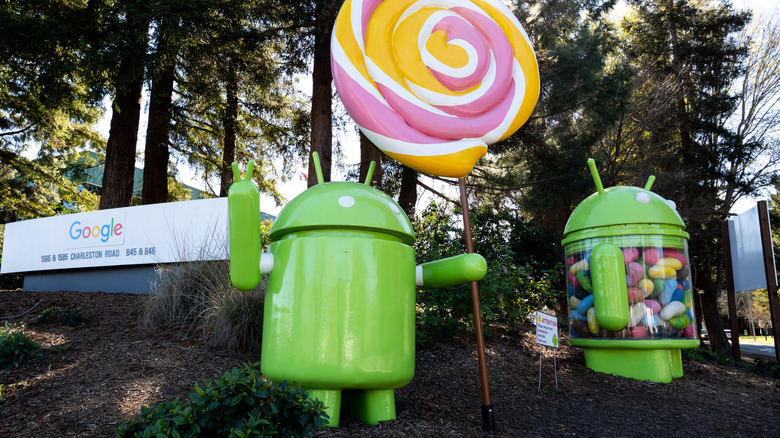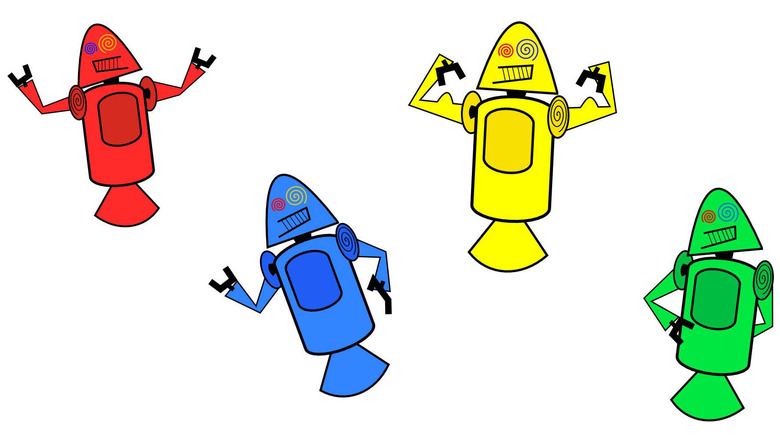The Original Android Mascot You Never Knew Existed
A few weeks ahead of Android 14's release, Google gave a 3D design makeover to the Android mascot. The bugdroid -– as the community calls it — got a full-body refresh and appeared in various jazzy iterations. Over the years, the Android logo has also been refined to make it easier to read. What has remained a constant is an affable, almost cute brand identity. However, the original Android mascot was anything but.
In a post (via AndroidCommunity) on Google Plus — the dead Google social media platform -– one of the core members of the Android team shared tentative sketches of the mascot. Google's Dan Morrill referred to it as the "Dandroids." Presumably, the name came from combining Android with his own name, but the "D" at the beginning could also stand for dizzying (look at those eyes), disturbing, or disconcerting.
Imagine a world where Futurama's Bender was tasked with sketching a humanoid robot assistant, and he came up with a gruesomely colorful machine with magnetic tongs for fingers. Morrill, who often appeared at developer meets, created these designs as last-minute art before revealing the OS details at an internal meeting.
Of course, the Dandroids and their rocket-esque feet didn't make it to the final marketing material and were ditched in favor of the Bugdroid look. The name Dandroids didn't go unused, though. In its singular form, it represents a music artist, an Android app development studio, a malware detection model, and a custom Android ROM.
A colorful history
Morrill's post is the only public info we have about the Dandroids. Interestingly, it was Morril who officially cleared the air around the Android mascot's name. At the 2011 I/O 2011: Fireside Chat featuring senior faces from Google's Android team, Morril said the mascot has no official name, but the team calls it the bugdroid.
Irina Blok, a graphic designer at Google, designed the instantly recognizable green logo. According to The New York Times, Irina's team was asked to create an easily identifiable look involving a robot to represent the operating system before Google began advertising it. Blok took inspiration from science fiction, space opera, and "the pictograms of the universal man and woman that often appear on restroom doors."
The bugdroid has retained its fundamental identity over the years but defies conventional marketing logic in one crucial way. Like the operating system, the Android mascot's design is also open source. "The Android robot can be used, reproduced, and modified freely in marketing communications with proper attribution," Google explains in its brand guidelines.
The strategy certainly helped popularize the brand, and Google itself has had some fun on the journey. Back in 2011, Google released Androidify, a tool that let users create custom Android avatars. The project rode into the sunset in 2020. The company has a lawn dedicated to statues representing the Android versions released over the years at its Mountainview campus. Fortunately, Dandroids isn't one of them.

